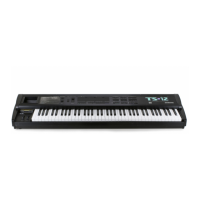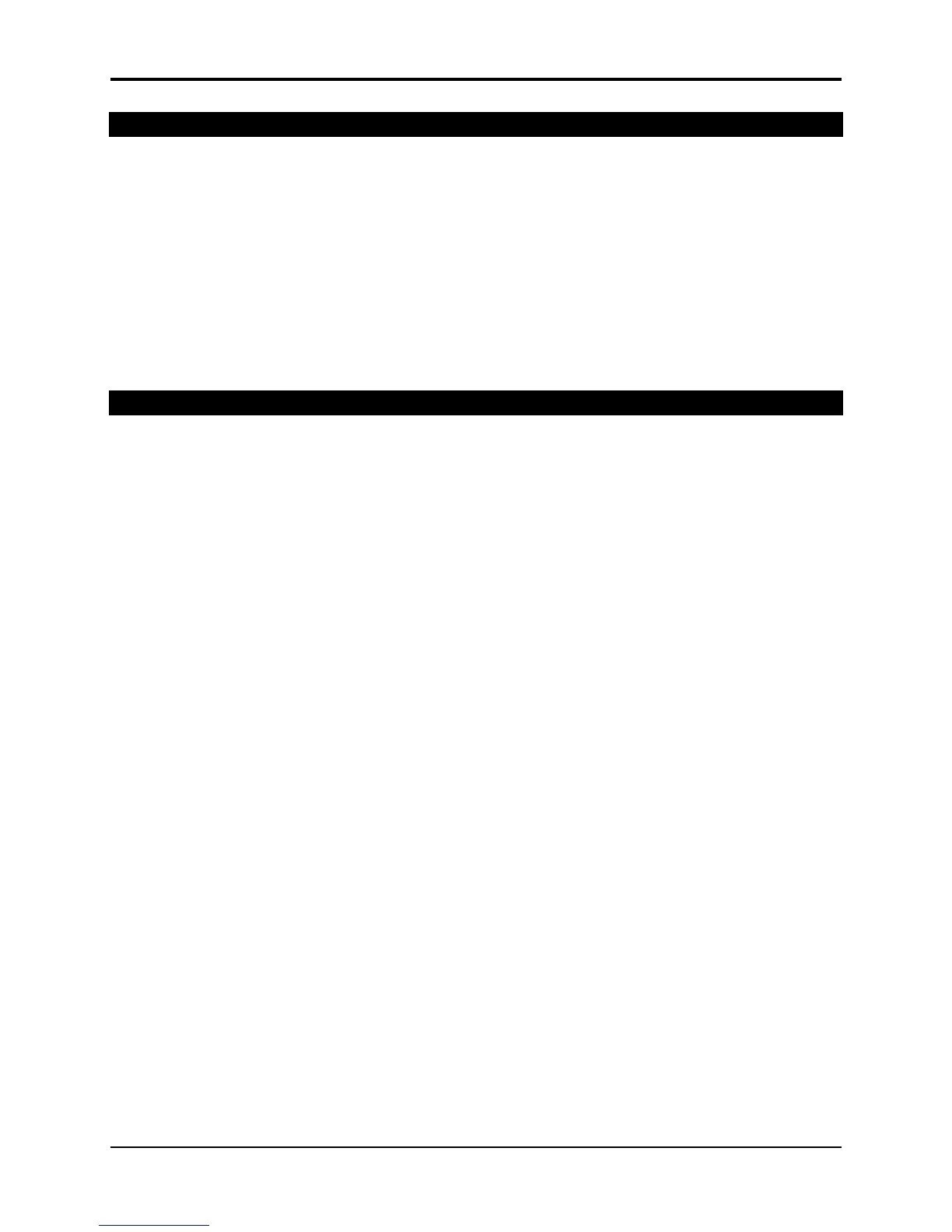Section 7 — Effect Parameters TS-12 Musician’s Manual
22
26 LARGE PLATE REVERB 2
This plate reverb shares the same signal routing topology as the previous plate reverbs, but
sports poly-phase interpolation, and two additional parameters:
SPREAD Range: 00000 to 31129
Determines the time intervals between the seven discrete echoes produced by the plate. The time
intervals are adjusted relative to one another.
SHAPE Range: -99 to +99
Determines the relative volume of the seven discrete echoes produced by the plate. At +00 seven
echoes are all the same volume. At -99 the first echo is quietest, with successive echoes increasing
in volume. At +99 produces the opposite effect.
27 HALL REVERB 1
This effect algorithm provides a studio-quality stereo reverb. The FX-1 and FX-2 MIX parameters
can be routed into the effect for different Dry/Wet mixes. HALL REVERB is a reverb with a long
decay, featuring left to right (transverse) reflections.
DECAY TIME Range: 0.20 to 100.0 msec
Controls the amount of time it takes for the reverberation to decay to a low level (-60 dB) after the
input signal stops.
PRE-DLY TIME Range: 0000 to 0500 msec
This parameter creates a time delay before the original signal is fed into the reverb.
HF - DAMPING Range: 00 to 99
Controls the rate of attenuation of high frequencies in the decay of the reverberation. As natural
reverb decays, some high frequencies tend to get absorbed by the environment. Increasing the
value of this parameter will filter out increasing amounts of high-frequency energy.
BANDWIDTH Range: 00 to 99
Acts as a low pass filter on the signal going into the reverb, controlling the amount of high
frequencies that will pass into the effect. The higher the setting, the more high frequencies are
allowed to pass.
LF DECAY Range: -99 to +99
This control will boost or cut the rate at which low frequencies will decay.
DIFFUSION Range: 00 to 99
Determines whether the early reflections will appear as a series of discrete echoes (lower values)
or will be more diffused (higher values).
DETUNE - RATE Range: 00 to 99
Controls the LFO rate of detuning incorporated within the reverb. Detuning creates a slight pitch
shift into the reverberated signal, giving it a more natural sounding decay by breaking up
resonant nodes.
DEPTH Range: 00 to 99
Controls the depth of the detuning, that is, how much the pitch will change. Low values yield a
metallic sound. Some voices sound best with very low values.

